Preventing and Treating Food Aggression in Dogs
Food aggression in dogs occurs when a dog feels the need to guard or protect his food, possibly as a result of having food taken away or by living in a situation where food has been scarce.
Preventing Food Aggression in Dogs
Dogs must be allowed to eat their meals in peace, just like we humans like to eat our meals uninterrupted. When you feed your dog, leave him to eat until he is finished. Do not allow adults, children, or other pets to approach the bowl. Do not stroke or pet your dog while he is eating. DO NOT pick up the bowl mid-meal and put it back down “to show the dog that you own the food” – that is a sure-fire way to develop dog food aggression.
Treating dog food aggression
If your dog is showing signs of food aggression, he feels the need to protect his food. He feels that his food may be taken away. To treat food aggression in dogs, it is important to change the way your dog feels about your approach to his bowl. To begin, for several days, feed the dog meals by presenting an empty bowl and placing a few bites of food in the bowl. After he has finished, he will likely look to you for more. Add more food to the bowl. Repeat until the meal is finished.
Changing the way the dog feels
After following the guidelines above for several days, your dog should be comfortable receiving food from you and waiting for you to put food into his bowl. To move forward, for the next several days, give the dog his meal by putting the bowl down and walking away. Once or twice during the meal, approach the bowl, careful to keep a safe distance, and toss a high-value treat (something better than what is in his bowl) toward the bowl.
The treat doesn’t have to go into the bowl; somewhere in the vicinity where your dog can still see it is fine. The dog should stop eating for a moment just long enough to take the treat. In time, the dog will begin to associate your approach to getting special treats. After a few days, you should be able to come closer to the bowl and drop high-value treats directly into the bowl while your dog is eating. You may notice that your dog will look up to you expectantly. This means that he is now seeing your approach to his bowl as a positive thing, and not as a threatening gesture.
Preventing dog food aggression after treatment
Following the steps above will help ease your dog’s fear of having resources taken away from him. You should see improvement over a few weeks. You will not have to follow the steps forever; just until your dog no longer reacts negatively to your approach toward him during mealtime. However, it is important to stick to the general rule that no one is to approach the dog during his meals.
A human responsibility
It is your responsibility as a dog owner to make sure your dog feels safe in your home. Preventing food aggression in dogs comes down to you managing your dog’s environment so he does not feel the need to guard his food.



